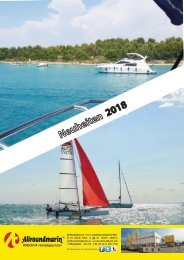- Seite 1 und 2:
1 2 3 4 5 6 7 8 9 10 www.lindemann-
- Seite 3 und 4:
AUSGESUCHTE NEUHEITEN AUS DIESEM KA
- Seite 5 und 6:
AUSGESUCHTE NEUHEITEN AUS DIESEM KA
- Seite 7 und 8:
Für das stehende und laufende Gut
- Seite 9 und 10:
www.gleistein.com Tauwerkeinsatz in
- Seite 11 und 12:
www.gleistein.com MegaTwin 07 Taper
- Seite 13 und 14:
www.gleistein.com DynaLite Kern: Dy
- Seite 15 und 16:
www.gleistein.com Tasmania Ø in mm
- Seite 17 und 18:
www.gleistein.com GeoPacks Bavaria
- Seite 19 und 20:
www.gleistein.com GeoSquare Polyest
- Seite 21 und 22:
www.gleistein.com Caribic Color Lie
- Seite 23 und 24:
www.gleistein.com Liekleinen Liekle
- Seite 25 und 26:
Liekleinen - Flechtleinen - Kausche
- Seite 27 und 28:
Kauschen - Drahtseilschneider Thimb
- Seite 29 und 30:
Drahtseile aus Edelstahl 1.4401 Sta
- Seite 31 und 32:
Wireteknik® Walzmaschinen Swaging
- Seite 33 und 34:
Werkzeuge für Presshülsen Tools f
- Seite 35 und 36:
Schraubterminals, Edelstahl 1.4401
- Seite 37 und 38:
Isolatoren - RopeLine Beschläge In
- Seite 39 und 40:
Walzterminals - Edelstahl 1.4401 Sw
- Seite 41 und 42:
Walzterminals - Edelstahl 1.4401 Sw
- Seite 43 und 44:
Wantenspanner - Montageteile - Edel
- Seite 45 und 46:
Ø Wantenspanner metrisches Gewinde
- Seite 47 und 48:
Toggle - Edelstahl 1.4401 Toggle -
- Seite 49 und 50:
Wantenspannungsmesser - Spannschlos
- Seite 51 und 52:
Splinte Safety pins Ringsplinte - R
- Seite 53 und 54:
Pelikanhaken, Sliphaken, Achterstag
- Seite 55 und 56:
Achterstag-Spanner backstay adjuste
- Seite 57 und 58:
Spezialschäkel, Bandschäkel Speci
- Seite 59 und 60:
Tauwerkschäkel - High Load Augen R
- Seite 61 und 62:
geschmiedete Schäkel aus hochfeste
- Seite 63 und 64:
Schäkel Shackles Schäkel, Fern-Os
- Seite 65 und 66:
Karabinerhaken Carbine hooks Standa
- Seite 67 und 68:
Symmetrische Karabinerhaken, Edelst
- Seite 69 und 70:
Lifeline Karabiner - Schnappschäke
- Seite 71 und 72:
Schnappschäkel Edelstahl geschmied
- Seite 73 und 74:
Schraubglieder Quick links Rechteck
- Seite 75 und 76:
Wirbelschäkel, Edelstahl geschmied
- Seite 77 und 78:
Rollen Sheaves Einfach gelagerte Ac
- Seite 79 und 80:
Barton Blöcke "Size 0" Barton bloc
- Seite 81 und 82:
Barton Blöcke "Performance" Barton
- Seite 83 und 84:
Barton Blöcke "Cruiser" Barton blo
- Seite 85 und 86:
Barton Blöcke "Cruiser" Barton blo
- Seite 87 und 88:
Kugellagerblöcke ball bearing bloc
- Seite 89 und 90:
Kugellagerblöcke ball bearing bloc
- Seite 91 und 92:
Kugellagerblöcke ball bearing bloc
- Seite 93 und 94:
High Tension Blöcke High Tension b
- Seite 95 und 96:
Ezi-Ratchet Block - Knarrblock Ezi-
- Seite 97 und 98:
Wichard Blöcke Wichard blocks WICH
- Seite 99 und 100:
Wichard Blöcke Wichard blocks WICH
- Seite 101 und 102:
SeaSure Blöcke SeaSure blocks SeaS
- Seite 103 und 104:
SeaSure Blöcke - BARTON Victory Bl
- Seite 105 und 106:
Taljenkästen, Niederholer- und Bau
- Seite 107 und 108:
Spibaumbeschläge Spi pole fittings
- Seite 109 und 110:
Rollenkästen sheaveboxes Rollenkä
- Seite 111 und 112:
Mastfußschiene Maststep Mastfußsc
- Seite 113 und 114:
Wantenversteller Stay adjuster Want
- Seite 115 und 116:
Trapezbeschläge Trapeze accessorie
- Seite 117 und 118:
Lazy Jack - Reffer - Bindereff Lazy
- Seite 119 und 120:
Kicker Boomkicker Kicker BARTON BOO
- Seite 121 und 122:
Einfädler - Mastrutscher-Stopper -
- Seite 123 und 124:
Für den Segelmacher, Persenningmac
- Seite 125 und 126:
Segellatten für nicht durchgelatte
- Seite 127 und 128:
Segellatten für durchgelattete Seg
- Seite 129 und 130:
Segellatten Sail battens Auswahlemp
- Seite 131 und 132:
Segellatten für durchgelattete Seg
- Seite 133 und 134:
Roll Latten - Segellatten Roller ba
- Seite 135 und 136:
Lattenendkappen Caps for sail batte
- Seite 137 und 138:
Lattenspannersystem Batten fittings
- Seite 139 und 140:
Luffshuttle Lattenrutscher - Schoth
- Seite 141 und 142:
Mastrutscher - Mastschienen Mast sl
- Seite 143 und 144:
Liekleinenklemmen Leechline cleats
- Seite 145 und 146:
Liekschoner - Triangeln Leech prote
- Seite 147 und 148:
Rundringe - D-Ringe Round rings - D
- Seite 149 und 150:
Super-Ring-System Super-ring-system
- Seite 151 und 152:
Nieten - Kauschen und Werkzeuge Riv
- Seite 153 und 154:
Kopfbretter Headboard Kopfbretter -
- Seite 155 und 156:
Schothornbretter - Sonnenschutzbefe
- Seite 157 und 158:
Liekleinen - Nummerntuche Leechline
- Seite 159 und 160:
Polyesternetz - Fensterfolie Polyes
- Seite 161 und 162:
Schablonenfolie - Schaumstoff - Led
- Seite 163 und 164:
Doppelseitige Klebebänder Double s
- Seite 165 und 166:
Klebebänder, Kleber, Imprägnierun
- Seite 167 und 168:
SOLBOND Nähgarn SOLBOND thread 1 2
- Seite 169 und 170:
Scheren Scissors Alle Scheren sind
- Seite 171 und 172:
Heiß-Schneider - Segelmacherzange
- Seite 173 und 174:
Takler- und Segelmacher-Werkzeuge R
- Seite 175 und 176:
Takelgarn - Handnähgarn und Ahle T
- Seite 177 und 178:
Messingösen - Laschhaken - Schlauf
- Seite 179 und 180:
Gummileine - Krampen Shock cord - c
- Seite 181 und 182:
Gurt-Beschläge Strap-Fittings Fuß
- Seite 183 und 184:
Gurtschnallen Buckles for webbing S
- Seite 185 und 186:
Gurtbandhaken - Gurtbandblöcke Web
- Seite 187 und 188:
Gurtband Webbing Dyneema® Gurtband
- Seite 189 und 190:
Spanngurte lashing straps Spanngurt
- Seite 191 und 192:
Klettbänder Touch & close fastener
- Seite 193 und 194:
Reißverschlüsse zippers Spiralrei
- Seite 195 und 196:
WEATHERMAX Polyester WEATHERMAX Pol
- Seite 197 und 198:
WEATHERMAX Polyester WEATHERMAX Pol
- Seite 199 und 200:
MasAcril® PU-beschichtet MasAcril
- Seite 201 und 202:
Persenning-Tuche, PVC-beschichtet -
- Seite 203 und 204:
Segel Imprägnierung Sail impregnat
- Seite 205 und 206:
Persenningstützen Telescopic suppo
- Seite 207 und 208:
STOPGULL AIR Halterungen STOPGULL A
- Seite 209 und 210:
Persenningknöpfe - Schnellverschl
- Seite 211 und 212:
TENAX® MARINE Schnellverschlüsse
- Seite 213 und 214:
PERFIX® Bisher wurde auf Booten Be
- Seite 215 und 216:
R DOT® Verschlüsse DOT® Fastener
- Seite 217 und 218:
PULL-THE-DOT® + LIFT-THE-DOT® + C
- Seite 219 und 220:
SNAD ® Im Gegensatz zu herkömmlic
- Seite 221 und 222:
Rohrbeschläge für Sprayhood und K
- Seite 223 und 224:
Rohrbeschläge für Sprayhood und K
- Seite 225 und 226:
Rohrbeschläge für Sprayhood und K
- Seite 227 und 228:
Rohrgelenke - Biegemaschine - Rohre
- Seite 229 und 230:
Für die Decksausrüstung Jollen un
- Seite 231 und 232:
Relings- und Rohrbeschläge aus Ede
- Seite 233 und 234:
Relingsnetz - Umlenkrollen Guard Ra
- Seite 235 und 236:
Fußrelingbeschläge - Antennenbase
- Seite 237 und 238:
Leitösen Fairleads Leitösen - Fai
- Seite 239 und 240:
Leitösen - Decksdurchführungen Fa
- Seite 241 und 242:
Muttern - Unterlegscheiben - Holzsc
- Seite 243 und 244:
Schraubösen - Ringschrauben Ring s
- Seite 245 und 246:
Klampen Cleats Belegklampen - Deck
- Seite 247 und 248:
Lippen - Seitenklüsen - Klemmen fa
- Seite 249 und 250:
Schotklemmen cam cleats SERVO-Cleat
- Seite 251 und 252:
Schotklemmen cam cleats Allen Kugel
- Seite 253 und 254:
Clamcleat® Tauklemmen Clamcleat®
- Seite 255 und 256:
Clamcleat® Tauklemmen Clamcleat®
- Seite 257 und 258:
Clamcleat® Tauklemmen Clamcleat®
- Seite 259 und 260:
Fallenstopper Clutches Spinlock Fal
- Seite 261 und 262:
Fallenumlenkblöcke Deck organisers
- Seite 263 und 264:
Barton Traveller Barton Travellers
- Seite 265 und 266:
Barton Traveller Barton Travellers
- Seite 267 und 268:
Barton Genua Rutscher Barton Genoa
- Seite 269 und 270:
Wincher - Barton Winschen Wincher -
- Seite 271 und 272:
Andersen - Winden aus Edelstahl And
- Seite 273 und 274:
Andersen - Selbstholende Winschen A
- Seite 275 und 276:
Kurbelhalter - Winschenfett handle
- Seite 277 und 278:
Optimistenzubehör Optimist parts P
- Seite 279 und 280:
Optimistenzubehör Optimist parts M
- Seite 281 und 282:
Optimistenzubehör Optimist parts K
- Seite 283 und 284:
Optimistenzubehör Optimist parts K
- Seite 285 und 286:
Optimistenzubehör Optimist parts T
- Seite 287 und 288:
Motorbootzubehör Anzeigeinstrument
- Seite 289 und 290:
Opferanoden Sacrificial anodes Well
- Seite 291 und 292:
Opferanoden - Stopfbuchsenpackung -
- Seite 293 und 294:
13 Treibstoffanschlüsse Fuel line
- Seite 295 und 296:
Schläuche Hoses 1 Treibstoffschlau
- Seite 297 und 298:
Hydrofoils - Spülaufsatz - Propell
- Seite 299 und 300:
PROP GUARD - Außenborderverlänger
- Seite 301 und 302:
McGard Außenbordersicherungen McGa
- Seite 303 und 304:
Motorhalterung - Quick Stop Schalte
- Seite 305 und 306:
Wasserski Zubehör Waterski equipme
- Seite 307 und 308:
Steuerräder Ultraflex Steering whe
- Seite 309 und 310:
Hinweise zur Auswahl von mechanisch
- Seite 311 und 312:
Steuerungsanlagen Steering systems
- Seite 313 und 314:
Steuerungsanlagen Steering systems
- Seite 315 und 316:
Steuerungsanlagen Steering systems
- Seite 317 und 318:
Steuerungsanlagen Steering systems
- Seite 319 und 320:
Schaltungen Lever controls Einhebel
- Seite 321 und 322:
Schaltungen Lever controls Einhebel
- Seite 323 und 324:
Schaltungen Lever controls Einhebel
- Seite 325 und 326: Schaltungen Lever controls Art.-Nr.
- Seite 327 und 328: Schaltkabel Engine control cables C
- Seite 329 und 330: Kabeldurchführungen Steering gromm
- Seite 331 und 332: Ultraflex Hydraulik Steuerung Ultra
- Seite 333 und 334: Hydraulik Steuerung Sätze hydrauli
- Seite 335 und 336: Anzeigeinstrumente Marine instrumen
- Seite 337 und 338: Steuersitze - Sitzsockel - Fußstü
- Seite 339 und 340: Tischbefestigungen Table Brackets T
- Seite 341 und 342: Impeller für Innenbordmotoren Impe
- Seite 343 und 344: Impeller für Außenbordmotoren Imp
- Seite 345 und 346: Schalldämpfer Silencers Mittelscha
- Seite 347 und 348: Treibstofffilter Fuel filters Benzi
- Seite 349 und 350: Ölwechselpumpen - Scheibenwaschanl
- Seite 351 und 352: Rollen und Bugpuffer Roles and bowp
- Seite 353 und 354: ZUM STEUERN & FORTBEWEGEN Bugstrahl
- Seite 355 und 356: Spiegelbeschläge Transom fittings
- Seite 357 und 358: Rudersicherungen - Schwertkastendic
- Seite 359 und 360: Pinnenausleger Tiller extensions Al
- Seite 361 und 362: Pinnenausleger Tiller extensions LI
- Seite 363 und 364: Paddel Paddels IndiTour 1 Qualität
- Seite 365 und 366: Bootsriemen - Displayständer Oars
- Seite 367 und 368: Rudergabeln - Buchsen Row Locks - S
- Seite 369 und 370: ENDURA MAX • 2 Leistungsklassen
- Seite 371 und 372: Bugstrahlruder Bowthrusters Schutz-
- Seite 373 und 374: Bugstrahlruder Bowthrusters Ausfahr
- Seite 375: ZUM ANKERN & FESTMACHEN Anker ab 38
- Seite 379 und 380: Ankerwinden, Aufbau Windlasses, on-
- Seite 381 und 382: Ankerwinden, Einbau Windlasses, thr
- Seite 383 und 384: Verholspill Capstans Pontoon Verhol
- Seite 385 und 386: Funkfernsteuerung Radio remote cont
- Seite 387 und 388: Kettenzählwerk Chain Counter 1 2 3
- Seite 389 und 390: ROCNA® Anker ROCNA® Anchors Der S
- Seite 391 und 392: Anker Anchors DC•Anker - DC•Anc
- Seite 393 und 394: Ankerhalter Anchor holders Halter f
- Seite 395 und 396: Schleusenhaken - Rocker stopper - F
- Seite 397 und 398: Ankerwirbel - Ankerverbinder Anchor
- Seite 399 und 400: Ketten Chains Ketten, kurzgliedrig,
- Seite 401 und 402: Anlegefedern mooring compensators F
- Seite 403 und 404: Bojenfänger Buoy catcher Bojen-Kar
- Seite 405 und 406: Bootshaken Boat hooks Bootshaken -
- Seite 407 und 408: Stegfender Dock Ring - Fender Profi
- Seite 409 und 410: Polyform-Fender und Bojen Polyform
- Seite 411 und 412: Polyform-Fender und Bojen Polyform
- Seite 413 und 414: Fenderclips Fender clips Fenderhake
- Seite 415 und 416: BRAVO Luftpumpen BRAVO Air pumps 12
- Seite 417 und 418: Für die Beleuchtung & Elektronik 1
- Seite 419 und 420: Lichtführung Navigation lights use
- Seite 421 und 422: Navigationslaternen Navigation ligh
- Seite 423 und 424: Navigationslaternen Navigation ligh
- Seite 425 und 426: Navigationslaternen Navigation ligh
- Seite 427 und 428:
Navigationslaternen Navigation ligh
- Seite 429 und 430:
Navigationslaternen Navigation ligh
- Seite 431 und 432:
Navigationslaternen Navigation ligh
- Seite 433 und 434:
Navigationslaternen Navigation ligh
- Seite 435 und 436:
Batteriebetriebene Navigationslater
- Seite 437 und 438:
Navigationslaternen Navigation ligh
- Seite 439 und 440:
Unterwasserleuchten - Deckstrahler
- Seite 441 und 442:
Deckstrahler - Salingleuchten Flood
- Seite 443 und 444:
Innenleuchten Interior lights Paris
- Seite 445 und 446:
QUICK LIGHT Leuchten QUICK LIGHT li
- Seite 447 und 448:
QUICK LIGHT Leuchten QUICK LIGHT li
- Seite 449 und 450:
Arbeitsleuchten Working Lights Stab
- Seite 451 und 452:
Leuchtmittel Light sources Leuchtmi
- Seite 453 und 454:
Clarion Marine Audio und Entertainm
- Seite 455 und 456:
Clarion Marine Audio und Entertainm
- Seite 457 und 458:
Batterie Ladegeräte Battery charge
- Seite 459 und 460:
Batterieschalter Battery switch BEP
- Seite 461 und 462:
12 V Verlängerungen, Stecker und S
- Seite 463 und 464:
Steckverbindungen Deck Connectors S
- Seite 465 und 466:
Steckverbindungen - Decksdurchführ
- Seite 467 und 468:
Schalter Switches Kippschalter - To
- Seite 469 und 470:
Carling Schalter Carling Switches C
- Seite 471 und 472:
Für die elektrische Ausrüstung El
- Seite 473 und 474:
Schaltpaneele Switch Panel 6-fach,
- Seite 475 und 476:
Schutzschalter - Relaisboxen - Kabe
- Seite 477 und 478:
Für die elektrische Ausrüstung El
- Seite 479 und 480:
CEE - Stecker CEE - Connectors CEE
- Seite 481 und 482:
CEE - Stecker CEE - plugs CEE Adapt
- Seite 483 und 484:
BERKER Integro Flow Gerade auf klei
- Seite 485 und 486:
Für die Sicherheit, Flaggen und Zu
- Seite 487 und 488:
Flaggen Flags Bundesflaggen / Europ
- Seite 489 und 490:
Flaggen - Ankerball - Signalkegel -
- Seite 491 und 492:
Flaggenstöcke Flaggstaffs Flaggens
- Seite 493 und 494:
Radar Reflektoren Radar Reflectors
- Seite 495 und 496:
Signalhörner Signal horns Signalh
- Seite 497 und 498:
Rettungswesten, aufblasbar lifejack
- Seite 499 und 500:
Feststoff Rettungswesten Inherent l
- Seite 501 und 502:
Wurfleine - Grab Bag - Rettungsring
- Seite 503 und 504:
SAFETY Grab Bag - Aquamate - Erste
- Seite 505 und 506:
Sicherheitsleinen Lifeline Sicherhe
- Seite 507 und 508:
Sicherheitsaugen - Bootsmannstuhl S
- Seite 509 und 510:
Badeleitern Boarding ladders 315 41
- Seite 511 und 512:
Sanitäre Ausstattung Abwasserpumpe
- Seite 513 und 514:
Barka Spülen und Zubehör Barka si
- Seite 515 und 516:
Whale Frischwassersysteme Whale fre
- Seite 517 und 518:
Whale Frischwassersysteme Whale fre
- Seite 519 und 520:
Whale Frischwassersysteme Whale fre
- Seite 521 und 522:
Whale Frischwassersysteme Whale fre
- Seite 523 und 524:
Whale Frischwassersysteme Whale fre
- Seite 525 und 526:
Boiler Boiler NAUTIC BOILER B3 Geh
- Seite 527 und 528:
Whale Tauch- und Verstärkerpumpen
- Seite 529 und 530:
Whale Abwassersysteme Whale waste s
- Seite 531 und 532:
Whale Bilgesysteme Whale bilge syst
- Seite 533 und 534:
Whale Bilgesysteme Whale bilge syst
- Seite 535 und 536:
Whale Bilgesysteme Whale bilge syst
- Seite 537 und 538:
Whale Bilgesysteme Whale bilge syst
- Seite 539 und 540:
Bilgepumpen - Bilgealarm Bilge Pump
- Seite 541 und 542:
Drainman Lenzer - Lenzer Drainman b
- Seite 543 und 544:
Bilgewasser ist die Hauptursache f
- Seite 545 und 546:
Pumpenset pumpkit Whale Pumpenset -
- Seite 547 und 548:
Toiletten Abwasserpumpen Toilet Was
- Seite 549 und 550:
Toiletten toilets SANIMARIN 31 Prak
- Seite 551 und 552:
Brauchwasser Leitungssystem TRUDESI
- Seite 553 und 554:
Brauchwasser Leitungssystem TRUDESI
- Seite 555 und 556:
Brauchwasser Leitungssystem TRUDESI
- Seite 557 und 558:
Brauchwasser Leitungssystem Messing
- Seite 559 und 560:
Brauchwasser Leitungssystem Messing
- Seite 561 und 562:
Brauchwasser Leitungssystem Messing
- Seite 563 und 564:
Borddurchbrüche - Wasserabweiser S
- Seite 565 und 566:
Schlauchverbinder Hose Connectors S
- Seite 567 und 568:
Schlauch hose 1 Treibstoffschlauch
- Seite 569 und 570:
Schlauchschellen - Wassertanks Hose
- Seite 571 und 572:
Tankdeckelschlüssel - Pützen - Ö
- Seite 573 und 574:
Inspektionsdeckel Hatch covers mit
- Seite 575 und 576:
Zubehör für Flüssiggasanlagen Ac
- Seite 577 und 578:
Gaswarnsystem Gas Detectors Gaswarn
- Seite 579 und 580:
Für den Innenausbau und die Lüftu
- Seite 581 und 582:
Griffe Handles Kistengriff nach DIN
- Seite 583 und 584:
Haken - Schraubenrosetten hooks - C
- Seite 585 und 586:
Haken - Schraubenrosetten - Kistene
- Seite 587 und 588:
Aufbau Türschlösser - Zylinder Ka
- Seite 589 und 590:
Möbelschlösser push locks Druckkn
- Seite 591 und 592:
Vorhangschlösser Padlocks Vorhangs
- Seite 593 und 594:
Schubriegel - Fingerschnäpper - Vo
- Seite 595 und 596:
Hebelverschlüsse Snag free fastene
- Seite 597 und 598:
Türfeststeller Door holder Kugelsc
- Seite 599 und 600:
Scharniere hinges Winkel - Angles E
- Seite 601 und 602:
Scharniere hinges Scharniere mit lo
- Seite 603 und 604:
Scharniere hinges Scharniere - hing
- Seite 605 und 606:
Scharniere hinges Scharniere - hing
- Seite 607 und 608:
Scharniere + Bänder hinges Kistenb
- Seite 609 und 610:
1 2 PERFEKTE BLENDEN MONTAGE Fastmo
- Seite 611 und 612:
1 2 LOW PROFILE Durch die LowProfil
- Seite 613 und 614:
1 2 FALLSICHERUNG Die Paneel Fallsi
- Seite 615 und 616:
Schappluken Sportelli hatches Kunst
- Seite 617 und 618:
Rundlüfter Round ventilators Rundl
- Seite 619 und 620:
Lüfter - Decksplatten ventilatiors
- Seite 621 und 622:
Motorraum Lüfter - Lüftungsschlau
- Seite 623 und 624:
Für die Kursbestimmung AEROVANE ab
- Seite 625 und 626:
Windex Windanzeige Windex wind indi
- Seite 627 und 628:
Windanzeiger Wind indicators HAWK W
- Seite 629 und 630:
Windanzeiger Wind indicators Allen
- Seite 631 und 632:
Sextanten - Künstlicher Horizont S
- Seite 633 und 634:
iTCHie Kompasse riTCHie compasses 9
- Seite 635 und 636:
Windmesser - Kurslineale Anemometer
- Seite 637 und 638:
0 180 1 2 UPPER NUMB ER : MOR E NOR
- Seite 639 und 640:
Für die Werterhaltung Abdeckplanen
- Seite 641 und 642:
Oberflächenbehandlung Surface Main
- Seite 643 und 644:
Oberflächenbehandlung Surface Main
- Seite 645 und 646:
Oberflächenbehandlung Surface Main
- Seite 647 und 648:
Redtree Pinsel - Abklebeband Redtre
- Seite 649 und 650:
Holzpfropfen - BALLISTOL Woodplugs
- Seite 651 und 652:
Schalldämmplatten - UV-Shielding T
- Seite 653 und 654:
Sikaflex Technique Marine Ausführl
- Seite 655 und 656:
Sikaflex Werkzeuge - Trittstufen -
- Seite 657 und 658:
Scheuerleisten Fendering profiles H
- Seite 659 und 660:
Scheuerleisten Fendering profiles W
- Seite 661 und 662:
Fußreling und Handläufe Toe and H
- Seite 663 und 664:
DEK KING Bond - Die Alternative zu
- Seite 665 und 666:
DEK KING 2G - Die Alternative zu Ho
- Seite 667 und 668:
Anti-Rutsch Tapes Non-Slip tapes 3M
- Seite 669 und 670:
PSP Marine Tapes - TESA Aluminium T
- Seite 671 und 672:
Planenösen - Luftentfeuchter Tarpa
- Seite 673 und 674:
SWOBBIT Decksreinigung SWOBBIT Deck
- Seite 675 und 676:
SWOBBIT Decksreinigung SWOBBIT Deck
- Seite 677 und 678:
Für den persönlichen Bedarf Akupr
- Seite 679 und 680:
Barigo - Schiffsuhren Barigo -Ship'
- Seite 681 und 682:
Multiwerkzeuge multi tools V ICTOR
- Seite 683 und 684:
Bordmesser - Solarduschen - Wäsche
- Seite 685 und 686:
Lagun - Cockpittische Lagun cockpit
- Seite 687 und 688:
Mückenschutz Mosquito repellent BA
- Seite 689 und 690:
Akupressurband - Segelhandschuhe Ac
- Seite 691 und 692:
Schlüsselanhänger - Schlüsselrin
- Seite 693 und 694:
Flaschenöffner - Aschenbecher - Ma
- Seite 695 und 696:
Spezialbedarf VERKAUFSUNTERSTÜTZUN
- Seite 697 und 698:
Präsentationshilfen für den Fachh
- Seite 699 und 700:
LAST MINUTE NEWS ENGEL Kühlboxen -
- Seite 701:
ENGEL Kühlboxen - ENGEL Cooling Bo







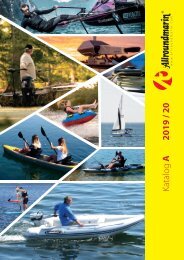
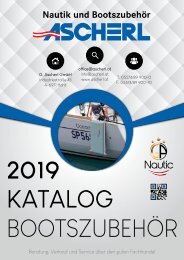

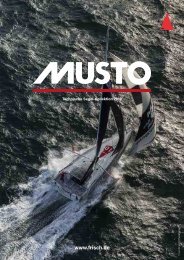
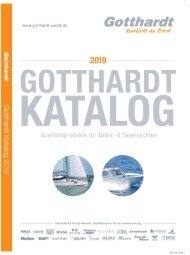

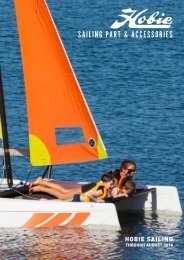
![Gotthardt-Technikkatalog_2018_komplett_low[1]](https://img.yumpu.com/60527477/1/184x260/gotthardt-technikkatalog-2018-komplett-low1.jpg?quality=85)
